|
Taxes in Belgium (Revisited) (No.55)
11 June 2014
In a local newspaper the previous day, the following headline appeared, “Personal Income Tax in Belgium is the Highest in Europe,” at an average of 42.8%. I already talked a little about taxes in Belgium in Ambassador’s Chat No. 21. When talking about tax rates, there is an important difference to make between the nominal tax rate and the effective tax rate. It becomes especially hard to comprehend when talking about the corporation tax rate, as numerous preferential and tax exemption measures have been taken. Belgium’s nominal corporation tax rate is 33.99%, making it the highest in Europe, but the effective tax rate on the other hand dips just under 26%, placing it amongst the lower tier-countries (By the way, Japan’s effective tax rate is about 35%, the second highest behind the US). However, the sum total of tax including the capital income tax (35.5%) and value-added tax (21%) amounts to 45.4% of the GDP. This makes it the second highest in Europe, behind Denmark. Belgium is indeed a ‘tax country’. Europe is getting more unified through the EU, but each tax rate, in fact, still varies from country to country. Each country has their own political views, which are apparent from their determined tax rates. The UK has an effective corporation tax rate of 23% and is actively trying to attract foreign investments. The Netherlands have the lowest capital income tax rate with 13.7%, thus bringing in a lot of money from around the world. Now, the aim of the Belgian government would be to support logistics by lowering the tax on petrol (and making the motorways toll-free), but currently the cost of 1 litre of petrol is 1.5 euro. Compared to Japan, this is about 30% more expensive, so it does not really feel like it has got any preferential treatment.
< The G7 Summit and Prime Minister Abe >
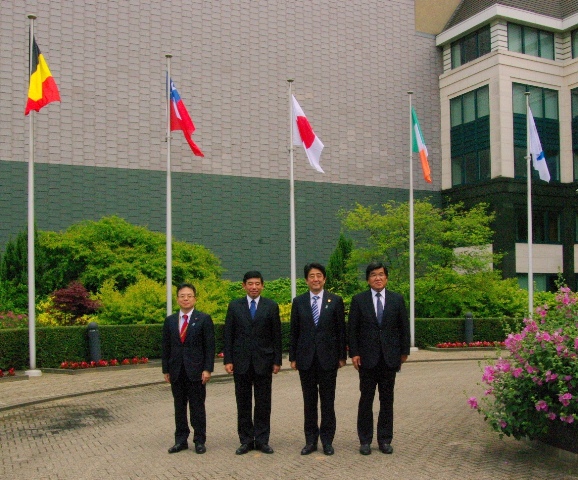 One week ago, Prime Minister Abe visited Brussels a second time for three days and two nights. Prime Minister Abe had visited Belgium last month, as his last stop on his tour around six European countries, but this time the objective was to attend the G7 summit organised by the EU. Originally a G8 summit was scheduled to be held at Sochi in Russia, but due to the tensions in the Ukraine, impromptu it was decided to hold a G7 without Russia. One week ago, Prime Minister Abe visited Brussels a second time for three days and two nights. Prime Minister Abe had visited Belgium last month, as his last stop on his tour around six European countries, but this time the objective was to attend the G7 summit organised by the EU. Originally a G8 summit was scheduled to be held at Sochi in Russia, but due to the tensions in the Ukraine, impromptu it was decided to hold a G7 without Russia. 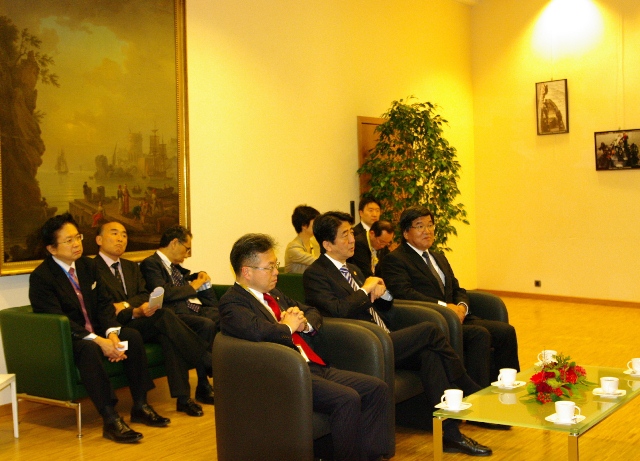 As for me, responsible for NATO and Belgium, from my perspective there was no involvement in the G7, nor did I participate in the conference. However, I got twice the opportunity to dine with Prime Minister Abe, where I gave a briefing on the affairs in Belgium and of NATO. The Prime Minister also very briefly visited the WCO (World Customs Organization) headquarters for the first time as the Japanese Prime Minister. He was given a tour around the place by Secretary General Kunio Mikuriya, and was given an explanation on the workings of the WCO. This international organisation is a small intergovernmental body that has about 160 staff in the secretariat. The 179 member countries are almost the same size as the UN. The organisation plays an important role in the promotion of international cooperation of customs service (as talked about in Ambassador’s Chat No. 6). It was a tremendous honour for an ambassador in the diplomatic service to receive the Prime Minister two times in the span of one month. As for me, responsible for NATO and Belgium, from my perspective there was no involvement in the G7, nor did I participate in the conference. However, I got twice the opportunity to dine with Prime Minister Abe, where I gave a briefing on the affairs in Belgium and of NATO. The Prime Minister also very briefly visited the WCO (World Customs Organization) headquarters for the first time as the Japanese Prime Minister. He was given a tour around the place by Secretary General Kunio Mikuriya, and was given an explanation on the workings of the WCO. This international organisation is a small intergovernmental body that has about 160 staff in the secretariat. The 179 member countries are almost the same size as the UN. The organisation plays an important role in the promotion of international cooperation of customs service (as talked about in Ambassador’s Chat No. 6). It was a tremendous honour for an ambassador in the diplomatic service to receive the Prime Minister two times in the span of one month.
< Economic Organisations in Belgium >
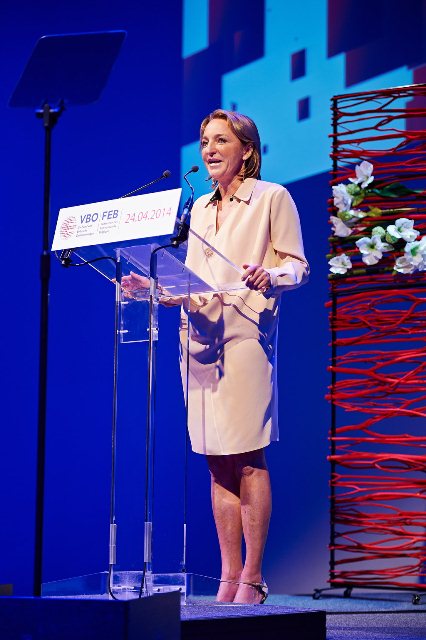 At the end of last month I visited the headquarters of the FEB (Federation of Enterprises in Belgium) in the centre of Brussels to meet with the newly appointed president, Michele Sioen. I talked about the inauguration of Ms Sioen in Ambassador’s Chat No 51. She is president of the specialised textile processing company, Sioen Industries, and up till now worked as the vice-president of the FEB. She is in her late 40’s and as a business woman she can still be considered young. From rather early on she succeeded the company’s founder, her father, and has been involved in the business activities for a while now - already she is a well-experienced new president. When asking her about her connection to Japan, she answered: “I have not been to Japan yet, but I have been involved in some business with Japanese companies.” At the start of last month, when Prime Minister Abe came to see Brussels, she was delighted to have had the tremendous honour of talking to him being seated in front of him at the European entrepreneurs’ round-table conference. At the end of last month I visited the headquarters of the FEB (Federation of Enterprises in Belgium) in the centre of Brussels to meet with the newly appointed president, Michele Sioen. I talked about the inauguration of Ms Sioen in Ambassador’s Chat No 51. She is president of the specialised textile processing company, Sioen Industries, and up till now worked as the vice-president of the FEB. She is in her late 40’s and as a business woman she can still be considered young. From rather early on she succeeded the company’s founder, her father, and has been involved in the business activities for a while now - already she is a well-experienced new president. When asking her about her connection to Japan, she answered: “I have not been to Japan yet, but I have been involved in some business with Japanese companies.” At the start of last month, when Prime Minister Abe came to see Brussels, she was delighted to have had the tremendous honour of talking to him being seated in front of him at the European entrepreneurs’ round-table conference.
The FEB encompasses all entrepreneurs in Belgium (50,000 corporations), but the Dutch and French-speaking region, as well as the capital region of Brussels, each have their own federation as well. The president of the organisation in the northern part of Belgium, called VOKA, (16,000 corporations) is Michel Delbaere, who also is the president of a food company; the organisation in the south, UWE (6,000 corporations), is led by president of AGC Glass Europe (subsidiary company of Japanese Asahi Glass), Jean-François Heris, since the end of 2013. BECI in Brussels (3,000 companies) is the follow-up of CCI (Chamber of Commerce and Industry), which has been in existence for over 300 years. In the case of Japan’s agency for promoting trade and investment, JETRO, there is no counterpart organisation at the national level in Belgium, but there are regionally separate organisations, FIT, AWEX, and BIE, each dispatching their representatives abroad seperately. Seen from the perspective of the Japanese, it seems rather inefficient that Belgium’s complex linguistic regional diversity would differentiate these economic organisations.
< The Earl of Ooidonk Castle >
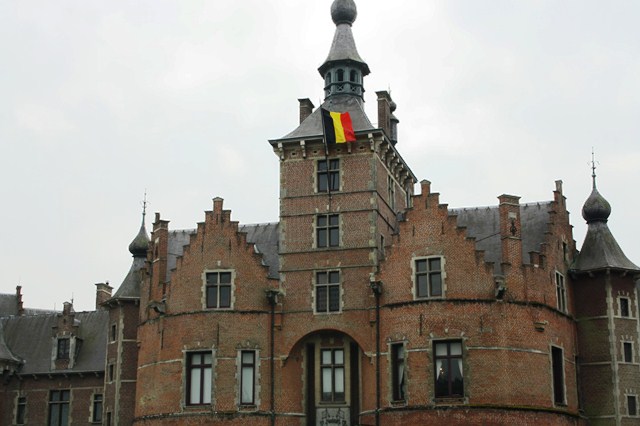 Following in the footsteps of August t’Kint de Roodenbeke, Belgium’s first diplomat to Japan over 140 years ago, I finally visited Ooidonk Castle at the end of last month. The castle, located about 60 km from Brussels in the country-side, has a unique 16th century Spanish renaissance architecture style. The great-grandfather of current castle owner, Earl t’Kint de Roodenbeke, bought the castle in the second half of the 19th century. It is a distinguished family; over two generations, his great-grandfather and grandfather were chairman of the senate and the family is also befriended with the Belgian royal family. Following in the footsteps of August t’Kint de Roodenbeke, Belgium’s first diplomat to Japan over 140 years ago, I finally visited Ooidonk Castle at the end of last month. The castle, located about 60 km from Brussels in the country-side, has a unique 16th century Spanish renaissance architecture style. The great-grandfather of current castle owner, Earl t’Kint de Roodenbeke, bought the castle in the second half of the 19th century. It is a distinguished family; over two generations, his great-grandfather and grandfather were chairman of the senate and the family is also befriended with the Belgian royal family. 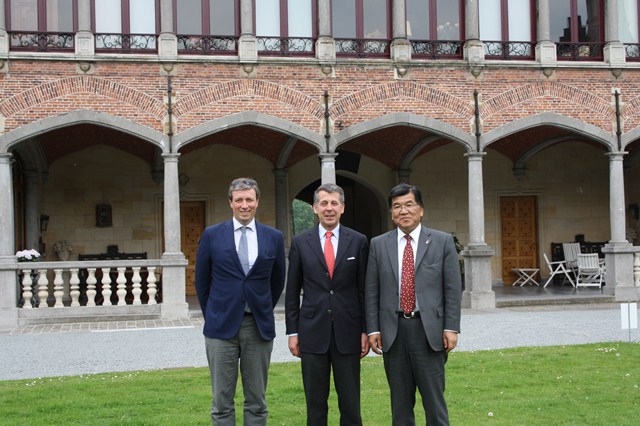 The castle became the residence of t’Kint de Roodenbeke family several years before August ended his stay in Japan and returned to Belgium. Therefore I thought, perhaps, that August must have visited this castle as well, but there were no such traces left proving this. There were however two Japanese clay dolls in a display cabinet, but it is unknown whether these were brought back home by August. As written in Ambassador’s Chat No. 52, August, who conducted treaty negotiations for opening diplomatic relations with the Tokugawa Shogunate in 1866, did not belong to the main line of the t’Kint de Roodenbeke family, he also lived a single life and thus had no direct offspring, so it is rather difficult to retrace his footsteps. The castle became the residence of t’Kint de Roodenbeke family several years before August ended his stay in Japan and returned to Belgium. Therefore I thought, perhaps, that August must have visited this castle as well, but there were no such traces left proving this. There were however two Japanese clay dolls in a display cabinet, but it is unknown whether these were brought back home by August. As written in Ambassador’s Chat No. 52, August, who conducted treaty negotiations for opening diplomatic relations with the Tokugawa Shogunate in 1866, did not belong to the main line of the t’Kint de Roodenbeke family, he also lived a single life and thus had no direct offspring, so it is rather difficult to retrace his footsteps.
< Godfrey of Bouillon and the Crusades >
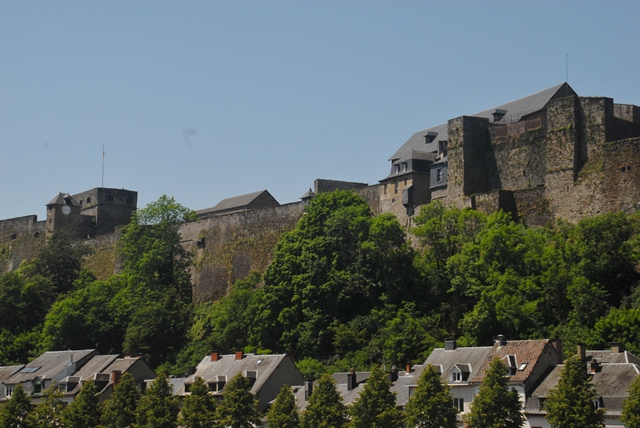 When you would ask who the most famous legendary figure in the history of Belgium is, I think many Belgians would struggle to give an answer, but if confined to just the Middle Ages, I believe many people would say Godfrey of Bouillon, leader of the first crusades, who managed to conquer the holy land of Jerusalem. He was the Duke of Lower Lorraine and in 1096, surged on by strong religious sentiment, he took part in the crusades together with his older and younger brothers. In Western Europe, at the end of the 11th century, time seemed to have stood still under the feudal system. It was a time where the common people and even lower rank knights lived destitute lives with no means of escaping. Compared to this, the Byzantine Empire and the Islamic countries to the east were flourishing worlds of civilisation. It is not so strange to think that Western Europe at the time roused up many young people with the dream and adventurous spirit to conquer those lands. When you would ask who the most famous legendary figure in the history of Belgium is, I think many Belgians would struggle to give an answer, but if confined to just the Middle Ages, I believe many people would say Godfrey of Bouillon, leader of the first crusades, who managed to conquer the holy land of Jerusalem. He was the Duke of Lower Lorraine and in 1096, surged on by strong religious sentiment, he took part in the crusades together with his older and younger brothers. In Western Europe, at the end of the 11th century, time seemed to have stood still under the feudal system. It was a time where the common people and even lower rank knights lived destitute lives with no means of escaping. Compared to this, the Byzantine Empire and the Islamic countries to the east were flourishing worlds of civilisation. It is not so strange to think that Western Europe at the time roused up many young people with the dream and adventurous spirit to conquer those lands.
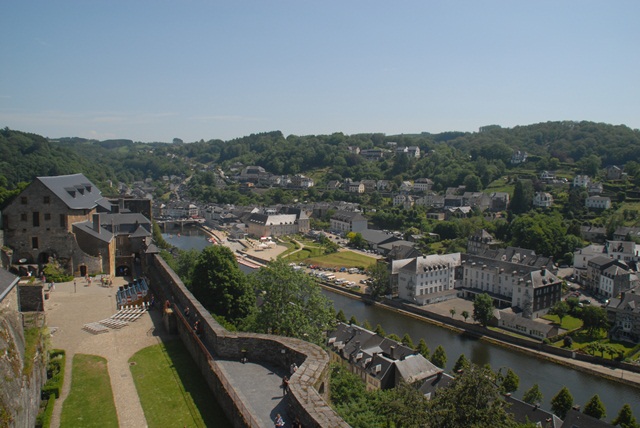 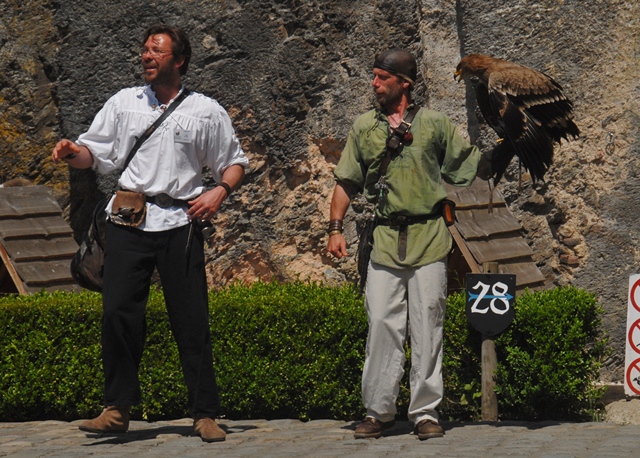 It is said that as soon as Godfrey of Bouillon donated all his lands and fortunes to the church, he left for Israel. This land in question is the Castle of Bouillon, situated 160 km south-east of Brussels. The first castle seems to have been built as early as the 10th century. The current castle walls are dated back to the 12th to 13th century, but one part has been rebuilt in the 16th to 17th century. Three days ago, on Sunday, I went to see this castle and even though I tried to picture the life of this legendary Belgian figure of the Middle Ages, Godfrey of Bouillon, I could not find out anything – for some reason I was shown a show with seven or eight falcons by falconer-looking men on a stage in the inner garden. I wondered what was that all about…? It is said that as soon as Godfrey of Bouillon donated all his lands and fortunes to the church, he left for Israel. This land in question is the Castle of Bouillon, situated 160 km south-east of Brussels. The first castle seems to have been built as early as the 10th century. The current castle walls are dated back to the 12th to 13th century, but one part has been rebuilt in the 16th to 17th century. Three days ago, on Sunday, I went to see this castle and even though I tried to picture the life of this legendary Belgian figure of the Middle Ages, Godfrey of Bouillon, I could not find out anything – for some reason I was shown a show with seven or eight falcons by falconer-looking men on a stage in the inner garden. I wondered what was that all about…?
|

